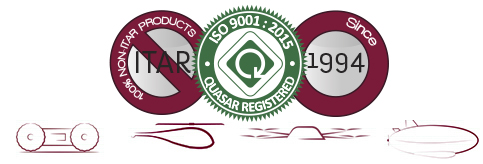The JASON Project:
Real Science. Real Time, Real Learning A Prestigious Educational Project for Manitoba Based MicroPilot
February 19, 2003
Do you remember the hero of Greek mythology Jason, who was the first great explorer to sail the seas on a ship called the Argo. Jason took with him a crew that included the most famous of Greek heroes -- Hercules and Orpheus -- but he also took many other men and women: navigators, shipbuilders, engineers and warriors. Jason called his crew the Argonauts, a word that literally means "sailors of the argo.”
The JASON Project
The JASON Project is a multi-disciplinary program that sparks the imagination of students. From the depths of dark oceans to the heights of wet rain forests, from icy polar regions to red-hot volcanoes, the JASON Project travels the world, bringing adventure and the thrill of discovery into the classroom.
The JASON Project began as the dream of Dr. Robert Ballard, the scientist and oceanographer who discovered the wreck of the RMS Titanic in 1986. Dr. Ballard believed that enabling students and their teachers to do field work from the classroom was a powerful concept. The JASON Project was born and has since grown into the world's premier real-time science teaching and learning program.
Named in the spirit of the Jason and the Argonauts, the JASON Project has taken more than five million young American "Student Argonauts" and "Teacher Argonauts" on exciting, enlightening and educational field trips all over the world via satellite and the Internet. The JASON Project is training a new generation of explorers; assembling a new team of students, teachers and scientists and setting off on a new adventure in the spirit of Jason each year.
JASON XIV: From Shore to Sea (school year 2002-2003)
This year JASON XIV engaged students and teachers in an exciting journey to explore the unique Channel Islands region of California. This area includes the Channel Islands National Park, the waters of the Channel Islands National Marine Sanctuary and the densely populated California coastline, and served as a laboratory for studying nature's dynamic systems. From January 27 – February 7, there were 55 live expedition broadcasts, featuring Host Researchers on the following topics:
- 1. NASA Remote Sensing
- 2. Kelp Forest Monitoring
- 3. NASA’s Electric UAV
- 4. Chumash Culture
- 5. Observational Exercise
In addition, the expedition’s progress was followed via daily updates to the JASON XIV website and live interactions with the expedition team.
MicroPilot and NASA Contribution to JASON XIV
The UAV Research Planes used in JASON XIV were RC model airplanes modified by NASA engineers to carry video cameras and scientific instruments for aerial environmental surveys. As well, the Research Planes were equipped with the MicroPilot MP2000 autopilots to allow for autonomous flight.
During JASON XIV, students worked alongside NASA scientists to launch the planes that were flown to study the kelp forests and animal populations along Anacapa Island’s shores. Imagery from the UAVs was compared with real-time data from the Terra and Aqua satellites. The planes tested on Anacapa Island were electric and could carry a payload of about 4 pounds and fly for up to 45 minutes. NASA’s gasoline-powered UAVs can carry twice the payload and fly for four times as long. However the JASON XIV didn’t use any gas-powered planes because of environmental concerns as well as local regulations.
Read latest news | Back previous page

